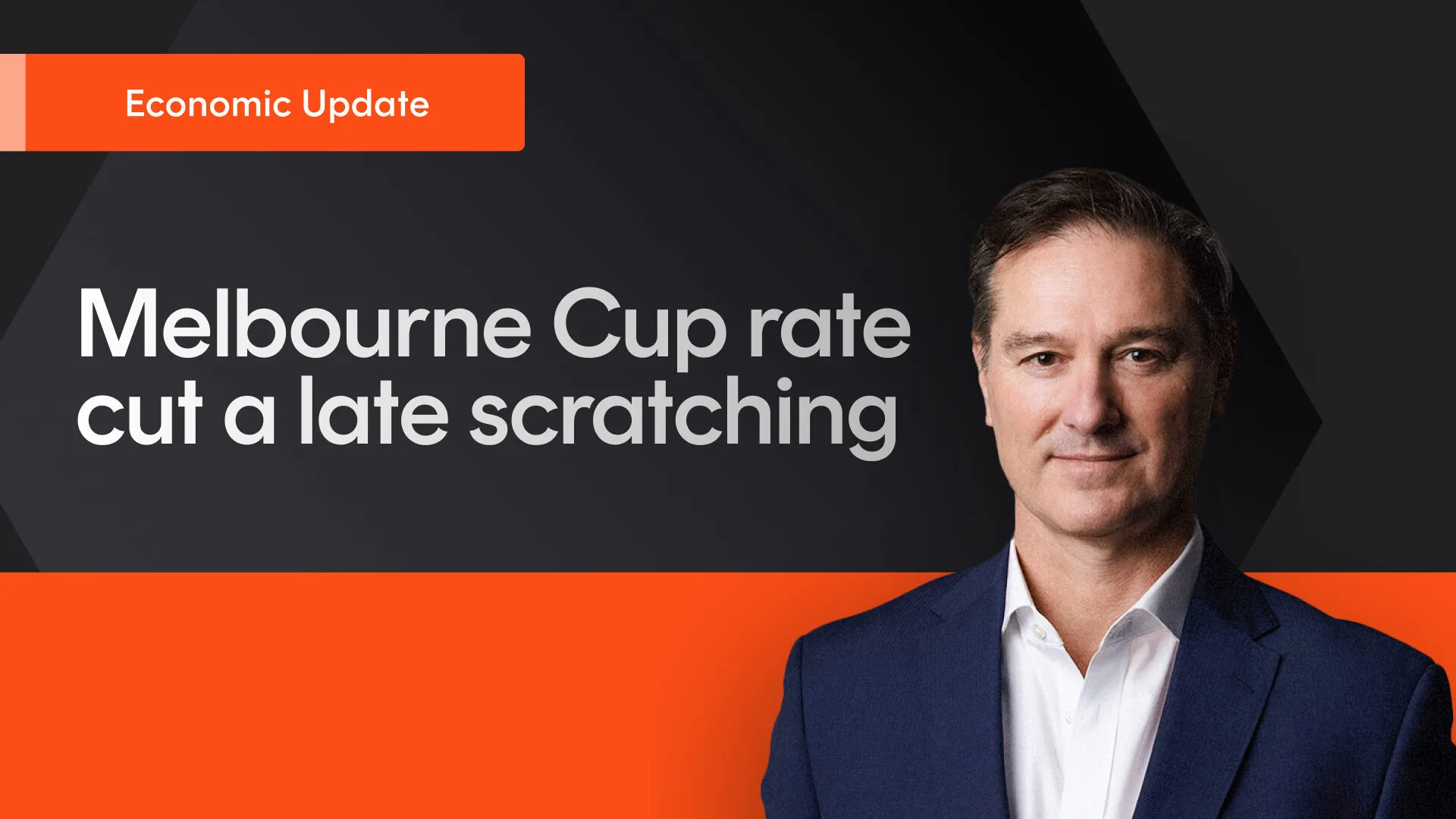1 minutes reading time
Today’s news that the trimmed mean measure of consumer prices rose 1.0% in the September quarter – and 3.0% over the year – effectively kills off any chance of an RBA rate cut next week. A rate cut is now a late scratching from Melbourne Cup Day festivities. Indeed, today’s numbers are so bad they also place the prospect of a February rate cut in even greater doubt.
My base case expectation was that the trimmed mean measure would have lifted 0.7% today, allowing annual underlying inflation to ease from 2.7% to 2.6%.
Perhaps the most disappointing aspect of today’s report was the still sticky level of service sector inflation, with annual services inflation edging higher to 3.5% from 3.3% in the June quarter.
Though annual growth in housing inflation continued to ease, recent quarterly gains remain firm – with rents and new dwelling purchase costs up 1.0% and 1.1% respectively in the September quarter. Annual inflation in domestic holiday travel has accelerated in recent quarters, reaching 5.3% in the September quarter.
The overall sticky level of service inflation points to an economy still operating at a high level of capacity and with pockets of still limited competition. Sticky inflation limits the degree to which the RBA can unshackle the interest rate constraints on economic growth.
Goods inflation was also firm, with annual growth of 3.0% up from 1.1% in the June quarter. The ongoing strong rebound in electricity prices – up 9.0% in the quarter and 37% over the past three quarters – is a contributing factor. Indeed, I still feel that the extreme volatility in electricity prices in recent years – due to temporary government subsidies – has indirectly distorted trends in trimmed mean inflation.
By influencing the range of CPI items at the tail-end of the distribution of prices changes each quarter, rapidly falling electricity prices over 2023 and 2024 likely helped bring down trimmed mean inflation a bit more quickly than would have otherwise been the case – and the recent strong rebound in electricity prices has helped slow the decline in trimmed mean inflation in recent quarters. In this sense, if there’s any consolation in today’s numbers it’s the apparent levelling out in trimmed mean inflation in recent quarter could reflect indirect distortions caused by the ending of electricity price subsidies.
All that said, just as the lack of competition in area of the service economy are contributing to sticky inflation, so is the abject failure of energy policy in recent years to keep a lid on electricity prices. Our energy policy failures are all the more damning given our abundance of energy resources – from coal, gas, wind, and sunshine!

